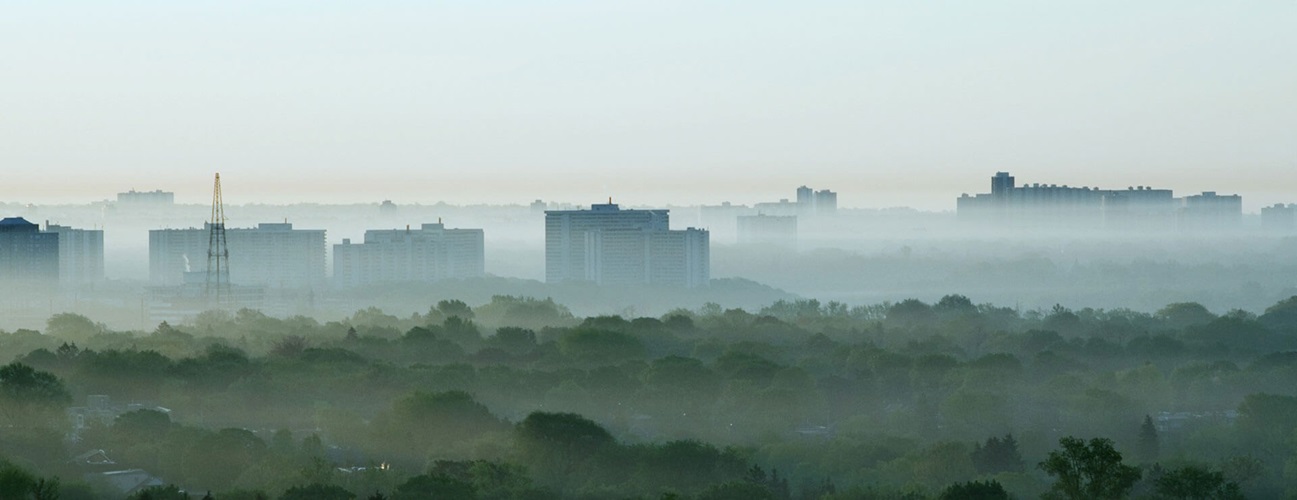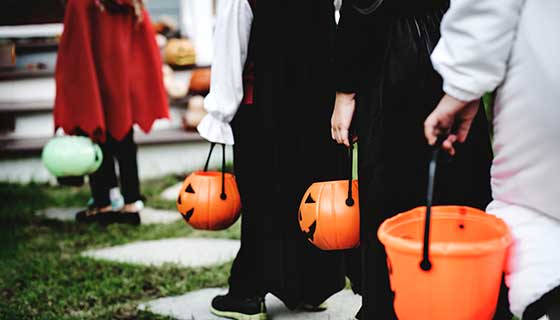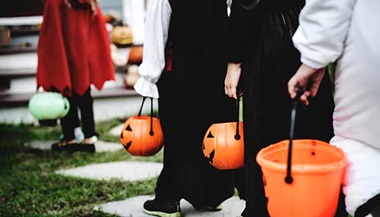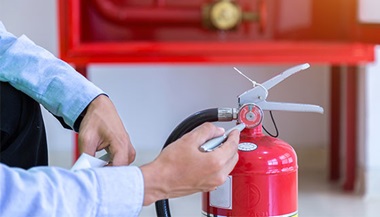Air Quality and Health
Poor air quality due to pollution and wildfire smoke can affect your health. Here’s what you should know if your area has air quality in the unhealthy range.
Air Quality and Air Pollution
The two most common types of pollution that can cause health problems are ozone and particle pollution.
Ozone is a colorless gas that occurs naturally in the atmosphere when sunlight interacts with oxygen. It also is released by burning fossil fuels from motor vehicles, factories and other industrial facilities. Ozone can accumulate at the ground level, where it is called smog. Hot, sunny weather can increase ozone buildup.
Particle pollution is microscopic bits of solid material or droplets suspended in the air. Particles come from car exhaust, tires, dust storms, volcanic eruptions, chemical aerosols, farming, construction, building demolition, fireplaces and wildfires.
Unhealthy Air’s Impact on Health
A high concentration of pollution in the air can irritate eyes and breathing passages in the nose, throat and lungs, causing:
- Coughing
- Wheezing
- More frequent or more severe asthma attacks
- Irritation of the eyes and throat
- Burning sensations in the chest
- Reduced lung function, resulting in a feeling of tightness or shortness of breath
According to the National Institutes of Health, air pollution causes 6.5 million deaths around the world each year, and those numbers are rising.
Frequent exposure to air pollution can raise your risk of:
- Respiratory disease such as
- Breast cancer
- Non-Hodgkin lymphoma
- Lung cancer
- Chronic inflammation due to excessive wear and tear on the body’s cells (oxidative stress) that can lead to cardiovascular disease
- Heart attack: One study suggests that up to 2.8% of heart attack deaths could be attributed to high levels of fine particulate pollution in combination with hot weather.
Bad Air Quality: Who is at risk?
Air pollution can affect everyone. But those who should be especially aware of bad air quality days include:
- Children
- Adults age 65 and older
- People with asthma
- People who are pregnant
- Those with lung disease, including chronic obstructive pulmonary disease (COPD or emphysema)
- Those with heart disease
Children and Air Pollution: Long-term Risk
Children are particularly at risk from air pollution. Studies suggest that exposure to air pollution is associated with premature birth and may affect the developing brain.
Families with children should follow local recommendations and call a doctor immediately if poor air quality is affecting their area and if their child:
- Has trouble breathing
- Is coughing persistently
- Is sleepier than usual
- Is uninterested in eating or drinking
Children born and raised in urban areas where air pollution is a factor statistically have a higher chance of developing neurological conditions, behavioral disorders, attention-deficit/hyperactivity disorder (ADHD), and autism spectrum conditions.
How do you protect yourself from bad air quality?
Stay informed. You can get information about air quality from local weather reports and the U.S. Air Quality Index.
Air quality refers to the concentration of pollutants in the air. The air quality index (AQI) changes daily and may be part of a regional or local weather forecast.
The air quality index is expressed by a number representing the concentration of pollutants in the air, and a color:
- Green: Good
- Yellow: Moderate
- Orange: Unhealthy for sensitive groups
- Red: Unhealthy
- Purple: Very unhealthy
- Maroon: Hazardous
The advisories also include specifics on exercising outdoors and children’s outdoor activities to avoid at certain levels.
Other tips to consider when air quality is poor:
- Limit your time outdoors to 30 minutes or less. Encourage children to play inside.
- Keep windows closed and use the “re-circulate” setting on your air conditioning or heat.
- Switch your fitness activities from outside to indoor. For instance, run on a treadmill or mall walk instead of running or walking outside. If you must exercise outside, pick an area away from roads and traffic.
- If you must spend time outside, consider wearing an N95 mask. Cloth or surgical masks will not prevent inhaling of particles.
- Take a shower after being outside to rinse particles from your skin and hair.
How to Help Protect Your Community When Air Quality is Poor
- Skip the fire pit. Avoid burning wood or trash.
- Limit driving. Carpool or combine errands when you can.
- Avoid gas-powered lawn care devices such as blowers and mowers, especially older models.
- Electricity production has an impact on air quality. Cutting down on energy use in your home can help.
Be prepared if you live in an area at risk
If wildfires or other air quality emergencies are possible where you live, be sure you and your loved ones are prepared:
- Stock up on medicine. Keep a seven-day to 10-day supply of all your family’s prescriptions in a safe, child-proof and waterproof container that you can grab quickly if you need to leave home.
- If you must go to a shelter due to fires, smoke or other air quality hazard, be sure to alert officials at the shelter about health conditions you or your loved ones have such as asthma, heart disease or COPD.
Wildfires and Air Quality
Wildfires, which can occur in hot, dry weather, release large amounts of smoke into the air and affect not only local communities but entire states and even continents. Their incidence is on the rise.
According to the Centers for Disease Control and Prevention, wildfire smoke contains gas and particles of burned trees, vegetation and buildings. Breathing smoke can cause coughing and irritation to your respiratory system. For older adults, people who are pregnant, people with lung disease and those with a respiratory infection, wildfire smoke can be dangerous.
Protecting Yourself from Wildfire Smoke
When air is unhealthy due to wildfires, stay indoors and follow these steps, especially if you have breathing problems:
- If you cannot avoid going outside, mask up. Do not rely on cloth face coverings or surgical masks, which cannot filter out smoke particles. An N95 mask approved by NIOSH (National Institute for Occupational Safety and Health) will provide better protection.
- Stay in rooms that you can close off from the outside.
- Avoid cooking, especially frying or grilling, which can increase indoor air pollution.
- Use an air filter and adjust the air conditioning or heating system to re-circulate air instead of drawing air from the outside.
- Do not smoke, especially inside your home.
- Avoid using your fireplace or lighting candles or incense.
- Hold off on vacuuming until air quality improves. (Vacuuming can re-circulate ash and particles that have settled on surfaces.)
- Follow your doctor’s recommendations if you or a family member have asthma or heart or lung disease.
Wildfire Ash
When a widespread fire occurs, it produces ash, which is dust, dirt and soot from burned vegetation and structures. Ash from burned buildings can contain chemicals and is more dangerous than ash from trees or plants.
Inhaling ash particles can irritate your nose, throat, breathing tube and lungs as well as eyes and skin. When combined with water or perspiration, some ash can cause chemical burns. If fire ash has contaminated your home or property, follow local safety organizations’ instructions for removing it.






